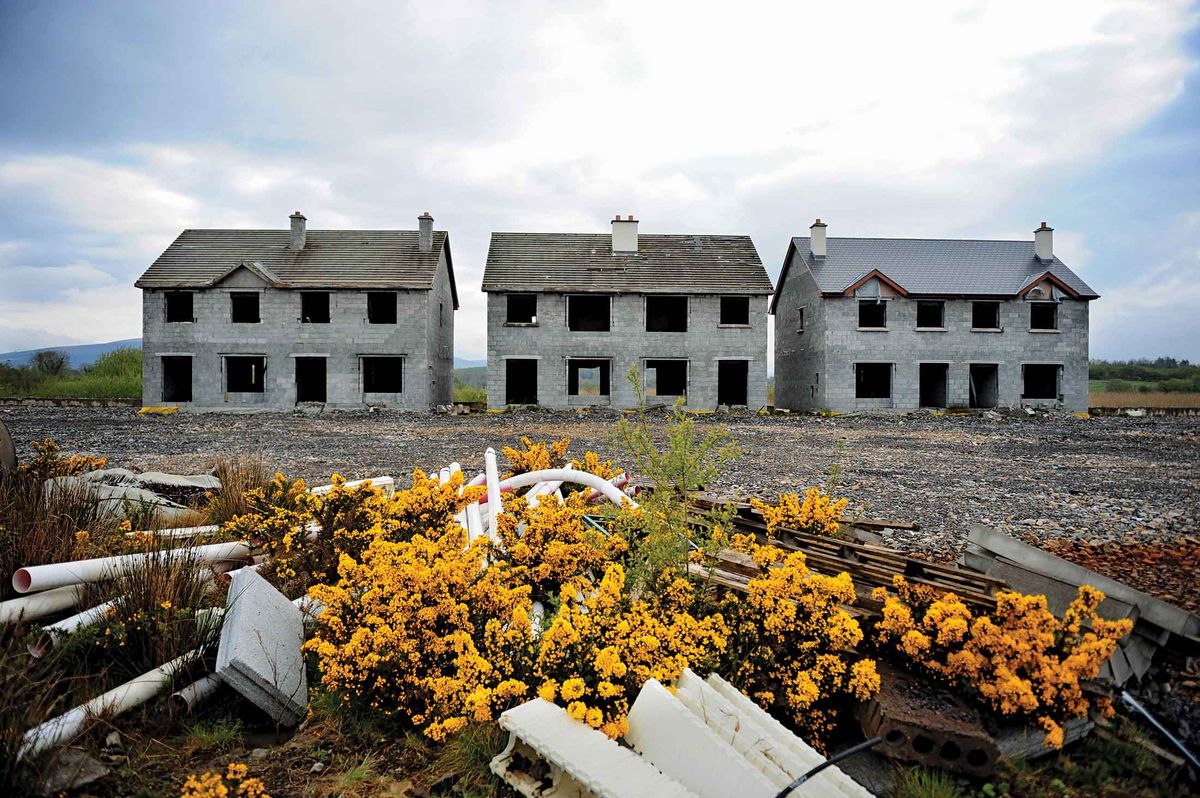The last property crash was brought about by a combination of banks lending on the basis of spurious calculations, massaging their own financial data, and inflated property prices that were completely divorced from reality.
Following the collapse, property prices adjusted back to more realistic values. The Government bailed out the banks and the main capitalist speculators. It also socialised the debt and transferred the debt to the public.
In effect, the property crash was used to attack the working class and our living conditions. Since then the working class has fought back. The privatising of the public water supply has been resisted, and the sham arguments of the Green Party and other so-called environmentalists have been exposed.
Public-sector workers have been trying to undo some of the damage done under various agreements introduced under the guise of the “crisis.” It is hardly surprising, therefore, to see that all the hallmarks of the next property crash are building up.
Dublin’s housing market has now reached a dangerous level, with inflated house prices. Figures produced by the Central Statistics Office show that the median price for a house in Dublin is €370,000. This is just over nine times average earnings, of €39,753. An affordable house is deemed to be 3½ to 4 times a person’s income.
Within the wider Dublin area, the Dún Laoghaire figures are worse, with an average price of €541,667, or fourteen times average earnings. In other words, despite the propaganda from Government and neo-liberal economists, workers are being forced into the private rental sector, as they are prevented from buying their own homes.
The National Competitiveness Council, in its annual review published in April, showed that Ireland is now the fifth most expensive place to live in the EU, with prices 13 per cent above the euro area average. It is more expensive to live here than in France or Germany, and without any of the benefits of good infrastructure such as public transport, child care, or health service.
A recent report from Waterford revealed that the bodies of the dead were left on trolleys; so you cannot even die with dignity. It is hardly surprising that there is growing pressure for wage increases and improvements in how taxes are spent.
Earlier this year the Irish Farmers’ Journal published its Agricultural Land Price Report for 2018. This showed that the average price in 2018 was €9,072 per acre. This was actually a drop of 0.18 per cent on the 2017 price. There were variations in the average, with Dublin having the highest, at €22,000, and such counties as Kildare, Wexford and Kilkenny also above average.
Approximately six to ten houses can be built per acre; so it can be extremely profitable to acquire even one acre of agricultural land and build houses on it. Obviously the land would require rezoning, but such rezoning would immediately transform the value of the land.
According to the survey, 33 per cent of farms sold in 2018 were bought by beef farmers, who account for 60 per cent of all farmers; 23 per cent were bought by dairy farmers, who make up only 14 per cent of all farmers. However, 17 per cent of farms were bought by business people. The Irish Farmers’ Journal reckons that these latter are using the purchase of agricultural land in order to pass assets to offspring and so avoid capital acquisitions tax by availing of agricultural relief.
In this way wealth can be kept within the family and transferred from one generation to the next. In the Communist Manifesto, Marx called for the “abolition of all rights of inheritance” as part of the move by the working class to assert its dominance in society.
The failure of successive governments to restrict the growth of Dublin and diversify the spread of wealth in the country is having a negative impact that will lead in the near future to another property crash.
The price of an acre of agricultural land is fairly static over previous years. It ranges from a national average of €9,000 to €22,000 in Dublin. The price of agricultural land relates to house prices. If in Dublin agricultural land is €22,000 an acre, and ten houses can be built on that acre at a value of €3.37 million, the profits to be made are huge.
These values also drive the rental value of land and property. In Dublin, rents average about €1,600 per month, which would swallow a substantial proportion of a worker’s income on average earnings. Workers are being excluded from the property market by high prices and are also being hammered in the private rental market.
To compound these problems, £42 billion of British fund investment has transferred to Ireland since the Brexit referendum. The capitalists who control this money want a return in either tax reliefs or expensive office space. The present government, with its neo-liberal philosophy, will not be able to control the increasing conflicts.






